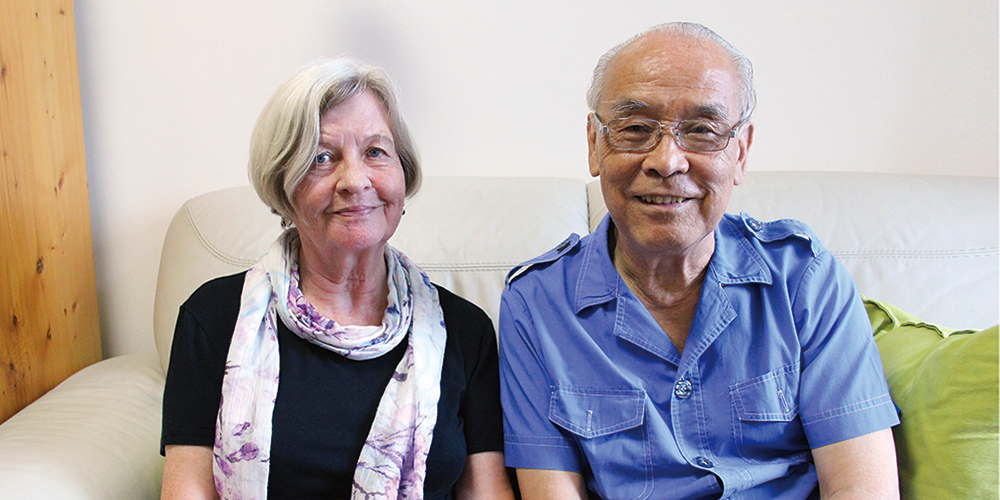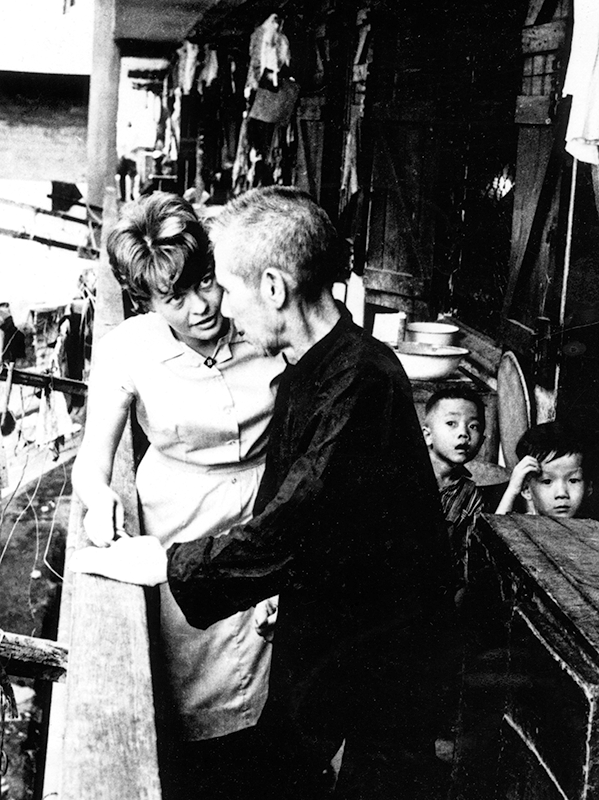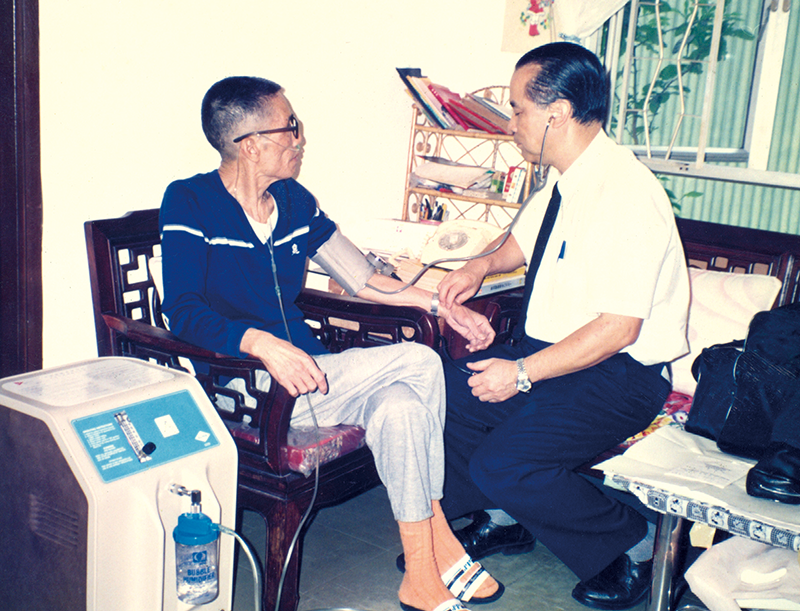Pioneers@1967
While ‘white angels’ provide care in hospitals, community nurses, the ‘blue angels’, deliver care to patients in the community.
Community nursing service (CNS) originated in Yang Memorial Methodist Social Service in 1967, and has penetrated into the community over the past half century. Built on solid foundation, CNS continues the notion of ‘hospital beyond boundaries’ to serve patients at home and reduce the risk of readmission caused by relapse. Currently, over 490 CNS nurses are working in Hospital Authority (HA).
Four foreign and local missionary nurses took on the task of providing CNS. One of them is Norwegian Liv Weber-Aslaksen, now 78, who came to Hong Kong in 1965. Tse Wing-chi, now 81, was the first male CNS nurse who joined the service in 1981. The duo ponders over vivid memories of working as a CNS nurse with HASLink.
Liv: I would choose the same path of being a CNS nurse again
At the initial stage of service, Yang Memorial Social Service Centre provided free home care service for out-patients referred by doctors. Liv (left), then working at the Centre, visited patients who lived in the squatter areas and resettlement areas in Shek Kip Mei, Wong Tai Sin, Sham Shui Po and Tsz Wan Shan districts. These patients had one thing in common – they all needed continued rehabilitation care. Most of them were stroke patients while some needed regular wound care.
The first patient Liv served was a 60-year-old stroke patient who lived alone in Shek Kip Mei resettlement area. “The old man had difficulty in mobility, so we provided him with home care every day and walked with him along the corridor to train up his body. Eventually, he could walk without any assistance. Tremendous sense of satisfaction drove us to continue the service.”
Liv adds that the poor living condition and hygiene were unfavourable for recovery of patients. Therefore CNS nurses taught them and their family about personal and environmental hygiene, and disease prevention, such as the proper way of brushing teeth and wound care, and also the importance of birth planning, seeing the cramped home condition of these households.
Although the public had little knowledge about CNS in the late 60s and early 70s, Liv earned great satisfaction from work. “I did not only help the patient but also the family and the entire society!”
Tse Wing-chi: The experience of treating patients at coolie house was unforgettable
Tse Wing-chi (right) was a nurse at Grantham Hospital in the 70s, taking care of orthopaedics and traumatology and thoracic patients, as well as paralysed patients. In 1981, Wing-chi joined Yang Memorial Social Service Centre and became the first male CNS nurse.
Conjuring up the scenes of providing wound care to coolies at a coolie house in Tsim Sha Tsui, Wing-chi says, “A coolie house of those days was similar to the cage homes of today, filled with triple bunk beds for rent. Almost 60 people were crammed in the small house and the limited space was only large enough for them to lie down but not sit. We had to treat patients at the entrance near the stairs. When someone passed by, we had to pause and continue afterwards.”
Wing-chi adds, nurses were creative that they used materials available to make training equipment for patients according to their needs, due to an inadequacy of home rehabilitation facilities. For example, clothes pegs can train finger muscles; cloth string tied at bed end can assist patients with difficulty in mobility to get up; bottles filled with sand can be used as dumbbells to train limb muscle strength.
Speaking of the most memorable event, Wing-chi says it was the experience of helping a paralysed Canadian boy in his 20s to walk again. “At first, I visited him five days a week to help him with passive exercise. Then, seeing his large bed, I designed crawling exercises for him. As a result, the lad managed to walk again after six months of intensive care and rehabilitation exercises!”
Putting on the old uniform for interview, Wing-chi reckons CNS nurses nowadays play an important role in delivering comprehensive nursing care, covering chronic disease management, specialty care and rehabilitation, apart from health education. He believes that CNS nurse is still a patient’s guide in returning to the community.
● "Patient always on my mind during typhoons!"
COVER STORY
● Birth of CNS: Woman living in a bathtub
● Holistic care passed on in community through generations
FEATURE
● Volunteer experience sheds light on career direction
● Small changes in ward improve patient care
HELEN HA
● Check out the fun facts about HA
● Blood donation, finding way and shopping made easy with apps
WHAT'S NEW
● New blood of HA Board vows to speak up for colleagues
● 2018/19 Funding and budget allocation at a glance
● 33 overseas-trained staff all set for HK’s first HBOT centre in hospital
STAFF CORNER
● 30 awardees on 2018 Honours List
● 延續的生命 (Chinese version only)



